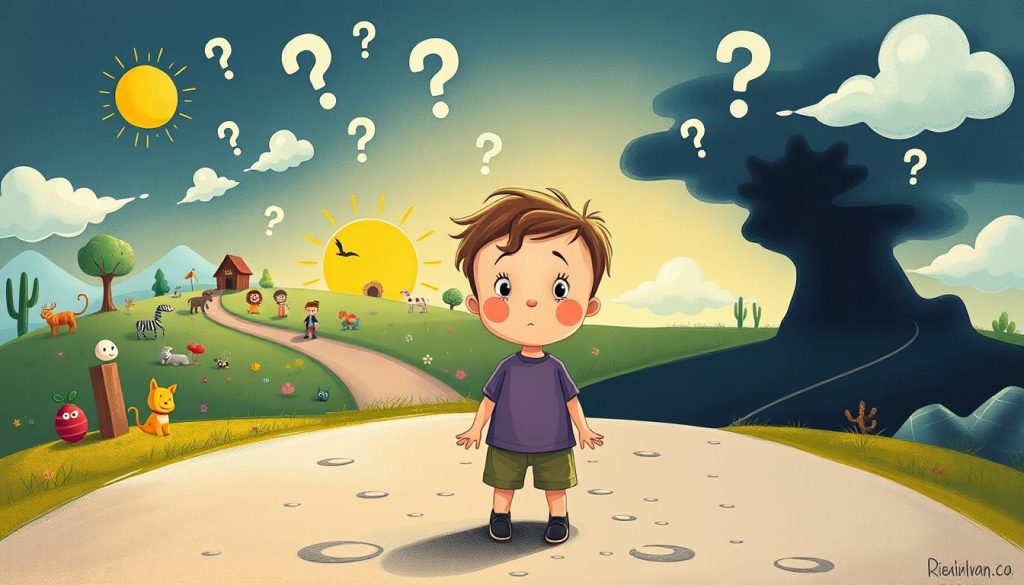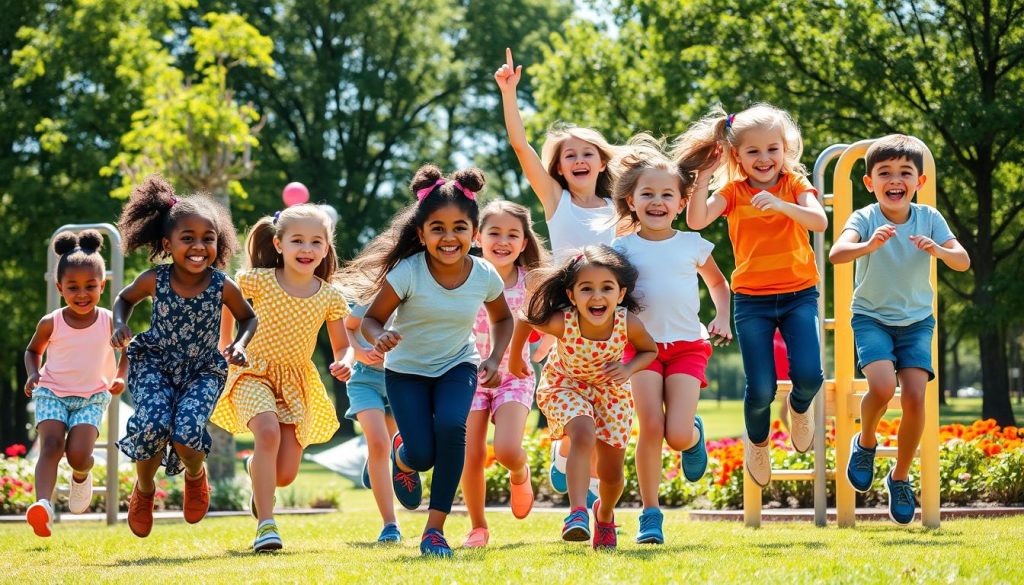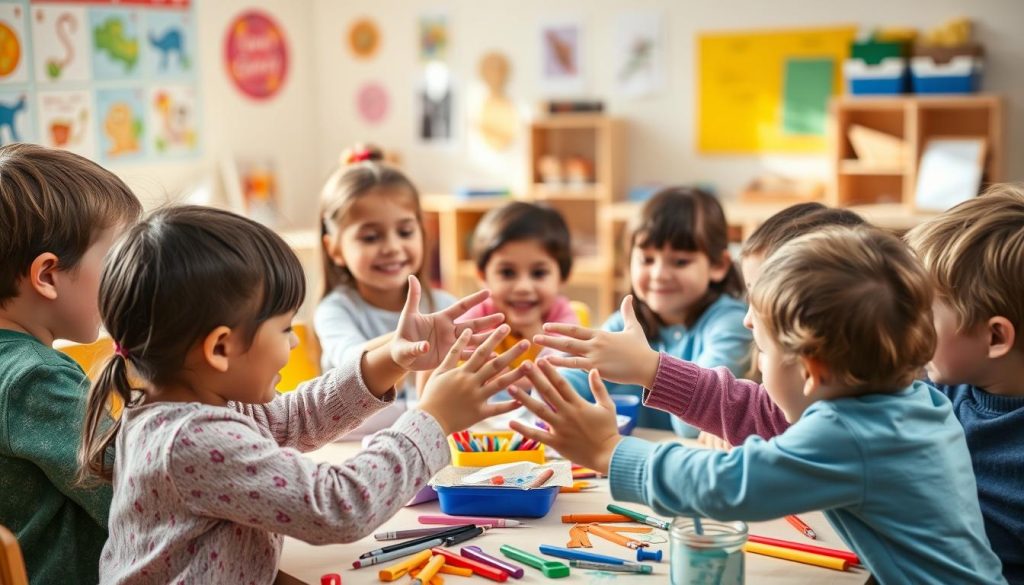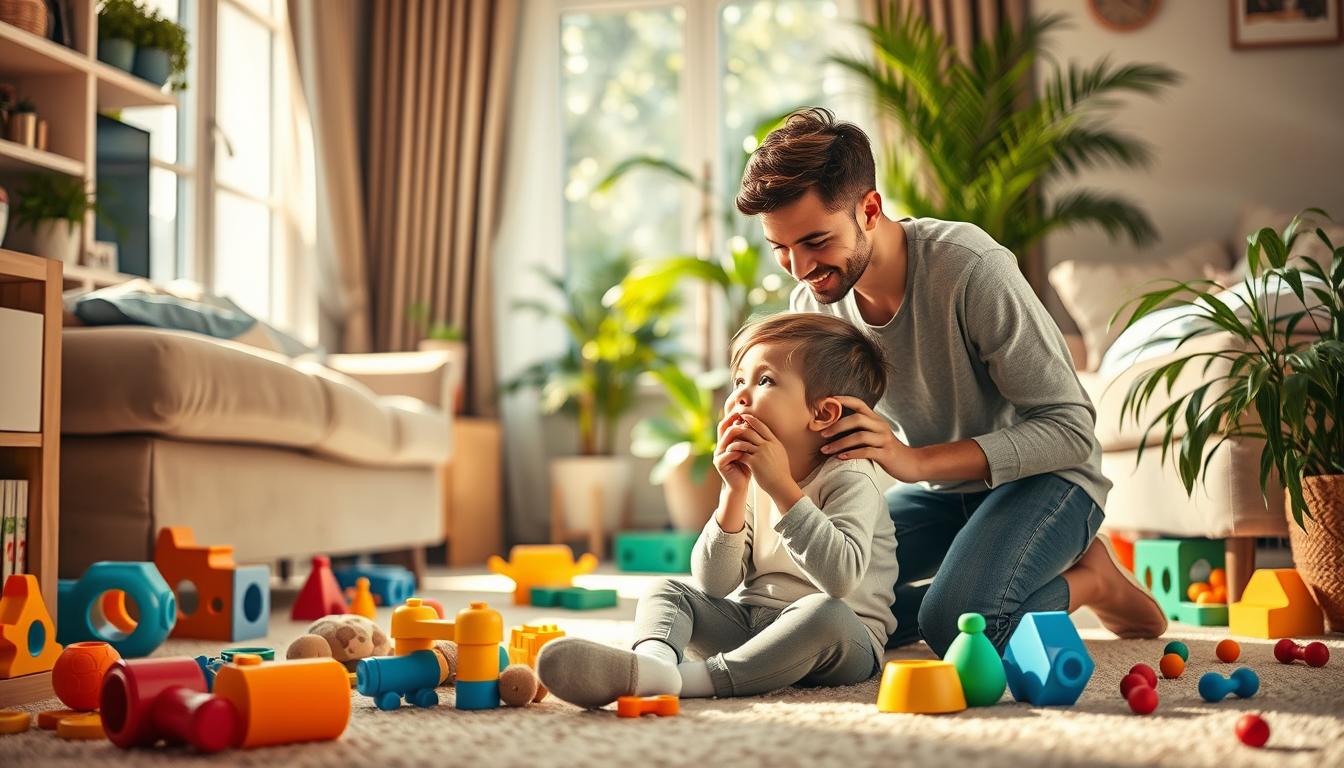Have you ever thought that trying to comfort your child too much might stop them from learning to face their fears alone? As parents, we naturally want to help our kids when they’re scared, like during thunderstorms or when they meet new people. But teaching them to handle their emotions and fears by themselves is key for their growth and freedom.
Studies show that kids often fear things like the dark, loud noises, and new places. It’s important for parents to know that these fears are a normal part of growing up. Elianna Platt, a social worker, says kids need to learn to overcome challenges by themselves, without too much help from us. Rachel Busman from the Child Mind Institute also stresses the value of careful support and guidance in helping kids deal with their fears.
It can be tough to find the right balance between protecting and empowering your child. We need to give them space to feel and deal with discomfort, helping them grow braver and more independent. This approach helps them manage fears related to things like screen time, budgeting, and eating disorders. It also lays a strong foundation for resilience that will help them in the future.
Key Takeaways
- Children’s fears such as fear of the dark and loud noises are a normal part of development.
- Excessive parental intervention can hinder a child’s ability to manage fears independently.
- Providing support and space helps children develop self-regulation skills.
- Parental anxiety can impact a child’s ability to navigate fear, emphasizing the need for balanced guidance.
- Praise and encouragement are essential in building a child’s confidence in managing fears.
Understanding Fear of Change in Kids
Children’s fear of change is common and varies by age and individual. Infants at 8-9 months start to recognize faces, leading to fear of strangers. Toddlers (10 months to 2 years) often feel scared when separated from their parents.
Kids aged 4-6 might fear things like monsters under the bed. Older kids (7 and up) can worry about real dangers like harm from others or natural disasters. Preteens and teens often fear social issues like school performance and what their peers think.

Common Fears Faced by Kids
Children face different fears as they grow. Understanding these can help you deal with parenting challenges. Kids may resist changes, especially if they have ADHD or emotional challenges.
Knowing how to handle these fears is key to gentle parenting. It helps kids learn to manage their emotions and behaviors.
The Role of Self-Regulation
Changes offer kids a chance to practice self-regulation. This skill is vital for managing emotions and behaviors. Kids with anxiety, like those with OCD, may struggle with perfection.
By giving kids chances to face challenges, you help them become resilient. If their fears are severe, they might need professional help. This shows the importance of being attentive to their needs.
How Parental Anxiety Impacts Kids
Your anxiety affects your child’s ability to deal with fears. Fear-based parenting can harm a child’s mental health. But a nurturing approach can boost their confidence and emotional stability.
Managing your anxiety is crucial for helping your child. It allows you to show them healthy ways to cope. Understanding middle child syndrome or stepchild relationships is also important for creating a supportive environment.
By addressing these aspects, you can make parenting easier. This ensures your children adjust better to changes.
Strategies for Helping Kids Manage Change
Helping kids deal with change is both challenging and rewarding. It’s key to their emotional health. By understanding their needs, you can offer the right support.
Teaching Coping Skills
Teaching kids to cope with stress and uncertainty is vital. They can learn emotion-focused strategies like emotional self-regulation. They can also learn problem-focused tactics, such as problem-solving and negotiating.
Online family therapy can help. A professional can guide the family in developing coping skills. This can include talking about puberty and dealing with sibling rivalry.
Providing Emotional and Physical Comfort
Emotional and physical comfort are crucial for kids during change. Encourage body positivity for kids to boost their self-esteem. Physical activities like coaching children’s sports can help them manage emotions.
Art, music, and sports are great for emotional expression and regulation.

Encouraging Open Communication
Open communication is key for kids to express their feelings. Listen to their concerns and validate their emotions. This helps them manage change better.
Meaningful conversations about topics like talking to kids about puberty or dealing with sibling rivalry are beneficial. Encourage them and help them plan for new situations. This builds their confidence and resilience.
Building Resilience Through Practice
Building resilience takes practice and support. It’s important to know that resilience skills can be learned. By slowly exposing kids to fears and setting achievable goals, they learn to handle new situations.

Gradual Exposure to Fears
Gradual exposure helps kids feel more confident and independent. For instance, if a child fears being alone in a dark room, parents can start by being there less. This lets the child face their fear little by little. Using eco-friendly parenting strategies and the “Change Guarantee” helps kids see positive change is possible.
This way, kids learn that facing fears is something they can do. It’s a natural part of growing up.
Setting Realistic Goals
Setting realistic goals is key for building resilience. Teaching kids to aim for small, achievable goals boosts their confidence. Parents can help kids plan how to overcome challenges, whether it’s school stress, social issues, or personal fears.
Talking about tough topics, like talking to kids about drugs or postpartum mental health, helps too. These strategies help kids develop a growth mindset and resilience. They learn to face life’s challenges with confidence.
Also, giving kids chances to express themselves and be creative builds a strong emotional base. This not only helps with emotional flexibility but also prepares them for kids and social media safety. By teaching these practices, you help your child develop resilience to deal with life’s obstacles.
Parenting Challenges: Guiding Kids Through Change
Parenting today is full of challenges, especially when it comes to change. Kids often struggle with social interactions, like Caleb at the playground. They might become defensive when criticized or controlled.
Understanding changes like divorce and children, remarriage and children, and talking about drugs is key. It helps them adjust better.
Keeping things stable is important. Routines and kids screen time limits help. They make kids feel secure during big changes. Also, teaching kids to think about their actions helps them accept change more easily.

Family changes, like stepchild relationships, can be tough. It’s important to listen to kids and offer love and support. This helps them feel understood during tough times.
Empowering kids to make their own decisions boosts their confidence. It teaches them to solve problems on their own.
Being consistent is also key. Clear rules and actions from parents help kids feel secure. This is especially true during big changes, like moving or job changes.
Being honest about changes helps kids prepare. It shows them what’s staying the same, too. This helps them feel more secure.
In short, parenting through change shows kids how to be resilient. By being adaptable, you teach them important skills for life.
Conclusion
Helping kids deal with fear of change is key for good parenting. By teaching self-control, gradual exposure, and setting realistic goals, you can guide them. This way, they learn to face change and grow into strong, adaptable people.
Recent studies show that 50% of parents choose gentle parenting over harsh methods. They focus on teaching respect and anti-racism, showing a shift towards inclusivity. High expectations and the freedom to make mistakes are also important for 40% of parents.
Education is a top priority for 35% of parents, with some choosing homeschooling. Emotional connections and open talks are valued by 30%. Meanwhile, 20% emphasize independence and self-discovery. These strategies help kids adapt to a fast-changing world.
As society changes, teaching kids to handle change is crucial. By adopting these practices, you help them not just survive but thrive in the long run.
FAQ
What are common fears faced by kids?
How does self-regulation play a role in managing fear?
How can parental anxiety impact a child’s ability to manage fear?
What strategies can be used to teach kids coping skills for managing change?
How can parents provide emotional and physical comfort to children facing fear?
Why is open communication important in helping kids with fear?
How does gradual exposure help kids build resilience?
What are realistic goals when helping children manage their fears?
How can the concept of a “Change Muscle” help children handle transitions?
How can parents model appropriate responses to change for their children?
When should parents seek professional help for their child’s fear?
This post contains affiliate links. If you click on a link and make a purchase, I may earn a small commission — at no extra cost to you. Thank you for supporting this blog and helping me keep the patterns free! Read the full Affiliate Disclosure & Transparency.
